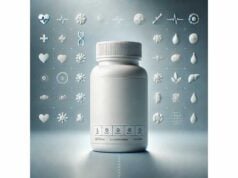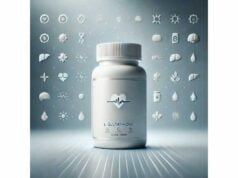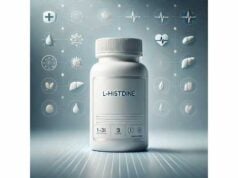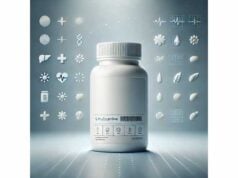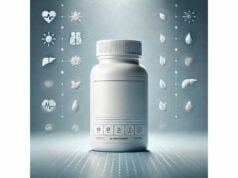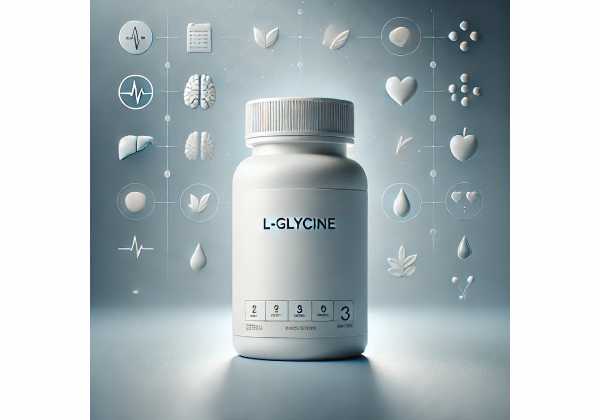
Glycine is the simplest amino acid—small, neutral, and everywhere in your body. It builds collagen, helps synthesize glutathione (your cell’s primary antioxidant), and serves as a neurotransmitter that can calm the nervous system. As a supplement, L-glycine is used most for better sleep and recovery, cardiometabolic support, and skin and joint health. Its appeal is practical: it’s inexpensive, tastes sweet, dissolves easily, and has human data behind common goals like sleep quality and metabolic markers. What makes glycine distinct is its “two worlds” role—metabolic building block by day, soothing neurochemical by night—so timing and pairing matter. This guide gives you a people-first walkthrough of what glycine does, where it helps most, who should avoid it, how to dose for different goals, and what to expect in real life. You’ll also see where the evidence is strongest, where it’s promising but early, and how to use it alongside proteins like collagen or alongside N-acetylcysteine (in “GlyNAC”) safely and effectively.
Quick Overview
- Improves sleep quality and next-day alertness at 3 g taken 30–60 minutes before bed.
- Supports collagen formation and antioxidant defenses (glutathione), helpful for skin, joints, and recovery.
- Typical daily dose: 3–5 g; higher (up to 15 g/day) used short-term in select studies under supervision.
- Safety: generally well tolerated; may cause stomach upset at high doses.
- Avoid or seek medical advice if you have advanced kidney disease, are prone to kidney stones, or are pregnant/breastfeeding.
Table of Contents
- What is L-glycine and how does it work?
- Evidence-backed benefits you can expect
- Who benefits most—and who should avoid it
- How to take L-glycine for sleep, performance, and wellness
- How much glycine per day? Dosage by goal
- Side effects, interactions, and safety checklist
What is L-glycine and how does it work?
Glycine is one of twenty amino acids used to build proteins. It’s “conditionally non-essential”: your body can make it, but demand often exceeds supply when collagen production, antioxidant defense, or recovery needs rise. Three domains explain most of glycine’s benefits:
- Structural role in collagen. Every third amino acid in collagen is glycine. That repetition lets collagen pack tightly into triple helices—the scaffolding of skin, tendons, ligaments, cartilage, and blood vessels. If you supplement collagen, additional free glycine can be the rate-limiting input for remodeling tissues. That’s why many “skin and joint” stacks include free glycine or glycine-rich collagen peptides.
- Biochemical hub for antioxidants and energy. Glycine combines with cysteine and glutamate to form glutathione (GSH), the cell’s primary antioxidant and a key detox cofactor. By supporting glutathione, glycine indirectly helps quench reactive oxygen species, maintain mitochondrial function, and support normal insulin sensitivity. Glycine also contributes to creatine synthesis (via guanidinoacetate), which matters for high-energy tissues like muscle and brain.
- Neurotransmitter action that favors sleep. In the nervous system, glycine acts at inhibitory glycine receptors and as a co-agonist at NMDA receptors. Taken before bed, it lowers core body temperature slightly and seems to accelerate the natural drop in temperature that initiates sleep. People often describe “smoother sleep” and better next-day performance without sedation. Mechanistically, this thermoregulatory nudge and inhibitory tone match what the brain does as it transitions into non-REM sleep.
Absorption and taste: L-glycine dissolves in water and tastes mildly sweet. It’s quickly absorbed in the small intestine and does not require elaborate delivery systems. Most people mix it into water, herbal tea, or blend it into a protein shake.
Where it fits nutritionally: Diets low in connective tissue and skin (i.e., typical Western diets) deliver less glycine than historical diets that used the “whole animal.” If you mostly eat muscle meats, adding 3–5 g/day of glycine—or using collagen peptides—can rebalance amino acid patterns (for example, offsetting methionine-heavy meals), which may help metabolic flexibility and tissue repair.
Bottom line: Glycine is small but influential. The same molecule that builds collagen participates in antioxidant systems and gently stabilizes the sleep–wake cycle—giving it an unusually broad, practical footprint in everyday health.
Evidence-backed benefits you can expect
Below are the outcomes with the most consistent human data, plus what users typically notice in practice. Results vary, but glycine’s profile is notable for modest, tangible benefits with minimal side effects at common doses.
1) Better sleep quality and next-day performance (3 g pre-bed).
In small human trials, a single 3 g dose taken 30–60 minutes before bedtime improved subjective sleep quality and reduced next-day fatigue and daytime sleepiness in people with occasional sleep difficulty. Unlike sedatives, glycine does not “knock you out”; people usually report falling asleep a bit faster, fewer awakenings, and feeling more refreshed on waking. Some trials using glycine-rich collagen peptides before bed report fewer awakenings and crisper morning cognition—consistent with glycine’s thermoregulatory and inhibitory actions. Practically, many users perceive the effect within the first week.
2) Calm focus without sedation.
Glycine’s inhibitory tone can take the edge off evening over-arousal. Individuals who run “hot” at night (mentally or physically) often find glycine’s gentle cooling and relaxing profile helpful without impairing next-day alertness. That makes it a useful first-line option before moving to stronger sleep aids.
3) Collagen support for skin and joints.
Because collagen structure depends on glycine repeating every third position, glycine intake helps support collagen turnover, especially when intake from food is low. People pairing 10–20 g collagen peptides with 3–5 g free glycine often report better skin hydration or joint comfort over 8–12 weeks. While the collagen provides the full peptide spectrum, the extra free glycine helps ensure the “assembly line” isn’t short on its most abundant building block.
4) Metabolic and cardiometabolic markers.
In adults with metabolic syndrome, daily glycine for several weeks has been associated with reductions in oxidative stress markers and a small but measurable drop in systolic blood pressure—consistent with glycine’s roles in glutathione synthesis and endothelial function. Clinically, people often notice the “soft signs” first: steadier energy after meals, fewer afternoon slumps, and improved training recovery.
5) Recovery and exercise.
Athletes use glycine to complement protein intake and to support sleep after evening training sessions. By smoothing sleep depth and aiding collagen remodeling, glycine can indirectly support recovery quality. It doesn’t replace total protein or carbohydrate strategies but can make hard blocks easier to bounce back from.
6) Potential healthy-aging applications (emerging).
A growing body of work is exploring glycine (alone or as “GlyNAC,” combined with N-acetylcysteine) for mitochondrial function, oxidative stress, and metabolic resilience in older adults. Early human data suggest improvements in glutathione status and functional measures over several months. These findings are promising but still maturing; larger randomized trials are in progress to clarify durability and clinical endpoints.
What not to expect: Glycine is not a sedative hypnotic, fat burner, or quick fix for chronic insomnia or pain. Its strengths are incremental and cumulative: better sleep feel, smoother recovery, a supportive nudge to redox balance, and collagen-related upkeep.
Time course:
- Sleep quality: often within 1–7 nights at 3 g pre-bed.
- Skin/joint support: 8–12 weeks when paired with collagen and vitamin C.
- Metabolic markers: 4–12 weeks of steady intake, usually with diet and activity changes.
Who benefits most—and who should avoid it
Most likely to benefit
- Occasional poor sleepers who want a non-sedating aid: 3 g 30–60 minutes before bed is the standard starting point.
- Active people and lifters aiming to recover better from late training: same 3 g pre-bed; optionally add 3 g post-workout for collagen support.
- People with low collagen intake (little bone broth, skin, connective tissue): 3–5 g/day can complement collagen peptides.
- Adults pursuing metabolic tune-ups as part of a broader plan (diet quality, movement, sleep): consistent, daily 3–5 g intake.
Situations where glycine is helpful as an adjunct
- Joint, tendon, or skin support programs. Pair with collagen peptides (10–20 g/day) plus vitamin C (75–100 mg) to support collagen cross-linking.
- Evening “tired and wired.” If your mind races or you run warm at night, glycine’s cooling/relaxing properties can reduce sleep-onset friction.
Who should avoid or get medical advice first
- Moderate to advanced kidney disease or severely reduced kidney function. Extra amino acids increase nitrogenous waste; individualized guidance is essential.
- History of calcium-oxalate kidney stones. In sensitive people, glycine can be metabolized to oxalate; discuss with your clinician before using and ensure high hydration.
- Pregnant or breastfeeding individuals. Human safety data as a standalone supplement are limited; avoid unless your clinician recommends it.
- Children. Outside of clinical indications under medical supervision, avoid routine use.
- People on antipsychotics that modulate glutamatergic signaling. While dietary glycine is generally safe, very high “pharmacologic” doses can interact with NMDA pathways. Always clear supplements with your prescriber.
Allergy note: True glycine allergy is exceptionally rare; most “reactions” are GI (nausea, loose stools) and dose-related.
Dietary alternatives and complements
- Collagen peptides (rich in glycine) for structural support.
- Gelatin in cooking for a glycine-containing protein.
- Whole-food sources (pork skin, bone-in cuts, slow-cooked shanks) increase dietary glycine naturally.
How to take L-glycine for sleep, performance, and wellness
Forms and flavor
- Powder (most common): Sweet-tasting, dissolves in water or tea; easiest for 3 g pre-bed dosing.
- Capsules: Convenient but bulkier at effective doses (e.g., three to six 1-g capsules).
- Combos: Paired with magnesium, theanine, or collagen peptides; check labels so your total glycine intake hits your target.
Timing by goal
- Sleep: 3 g 30–60 minutes before bed. If you’re very sensitive or have a small body size, begin with 2 g for a few nights, then increase to 3 g.
- Recovery and connective tissue: 3–5 g during the day, or 3 g post-workout, plus 10–20 g collagen peptides and vitamin C (75–100 mg).
- Metabolic support: 3–5 g/day with meals; consistency matters more than exact timing.
Mixing tips
- Stir into warm herbal tea or a small glass of water; it also blends smoothly into a protein shake.
- For travel, pre-portion in small sachets or use capsules to hit your dose.
Stacking examples
- Sleep stack (gentle): 3 g glycine + 200–400 mg magnesium glycinate 30–60 min pre-bed.
- Sleep stack (targeted): 3 g glycine + 100–200 mg theanine + good sleep hygiene (cool, dark room; regular schedule).
- Collagen support: Morning smoothie: 15 g collagen peptides + 3 g glycine + vitamin C source (e.g., kiwi or 100 mg supplement).
- Healthy-aging adjunct (emerging): Under clinician guidance, some older adults use glycine together with N-acetylcysteine (“GlyNAC”) to support glutathione status and mitochondrial function over 8–24 weeks.
What to pair with food
- Glycine is easy on an empty stomach for most; if you get mild nausea, take it with a small snack.
- For sleep, avoid combining with heavy, high-fat meals right before bed; you want the thermoregulatory nudge, not indigestion.
Travel and shift work
- Glycine can help stabilize sleep on off-kilter schedules without leaving you groggy for early calls or flights. Keep the 30–60-minute pre-bed window, even when “bedtime” shifts.
Adjusting if you don’t feel anything
- Verify timing (too early or too late can blunt effects).
- Check sleep hygiene (temperature, light, caffeine timing).
- Consider adding magnesium glycinate or improving daytime light/activity exposure.
- If still no effect after two weeks at 3 g, glycine may not move the needle for your sleep biology; it’s reasonable to discontinue.
How much glycine per day? Dosage by goal
Foundational daily support
- 3–5 g/day suits most adults seeking steady support for sleep feel, collagen maintenance, and general recovery. This range balances practicality, taste, and evidence.
Sleep quality
- 3 g once nightly, 30–60 minutes before bed. That’s the most common and best-tolerated regimen in small human trials. Some individuals do well at 2 g; others prefer 4–5 g on particularly hard training days or during stressful periods. Start at 3 g and titrate based on feel.
Collagen-related goals (skin, joints, tendons)
- 3–5 g/day of free glycine alongside 10–20 g/day collagen peptides and 75–100 mg vitamin C for 8–12 weeks. Free glycine is helpful, but the backbone of this protocol is adequate collagen peptides plus vitamin C.
Metabolic markers and redox balance
- 3–5 g/day with meals for 8–12 weeks as part of nutrition and movement changes.
- Higher intakes have been used short-term under supervision (for example, 15 g/day in adults with metabolic syndrome over several months) to influence oxidative stress markers and systolic blood pressure. These higher doses should be individualized and monitored for GI tolerance and kidney health.
“GlyNAC” combinations (emerging area)
- Protocols combining glycine with N-acetylcysteine are being studied for older adults over 8–24 weeks to target glutathione status and mitochondrial function. If you and your clinician consider this route, typical approaches divide total daily dosing into two or three servings to improve tolerance. Because products and ratios vary, follow your clinician’s plan rather than improvising high doses.
Cycling and duration
- For sleep: continuous use is common because tolerance is not typical; you can also save it for travel or demanding weeks.
- For skin/joints: plan on 8–12 weeks before judging results.
- For metabolic support: reassess energy, sleep feel, and routine labs after 8–12 weeks.
Ceiling doses and practicality
- Above 10–15 g/day, powders become bulky and GI side effects (bloating, loose stools, nausea) are more common. Most people will not need these doses outside monitored protocols.
Side effects, interactions, and safety checklist
Typical tolerability
- Glycine is generally well tolerated. The most common issues are mild GI symptoms—bloating, nausea, or loose stools—especially if you jump straight to high doses. Splitting the dose or taking it with a light snack usually fixes this.
Nervous system effects
- At the usual 3 g pre-bed, glycine may produce a pleasant sense of calm without sedation. It doesn’t impair next-morning cognition at typical doses. If you feel groggy, reduce the dose to 2 g and ensure you’re not combining it with alcohol or other sedatives.
Kidney and stone risk
- Glycine is metabolized in part to oxalate. If you have a history of calcium-oxalate kidney stones, use caution and discuss with your clinician; ensure high fluid intake and avoid very high doses. People with moderate-to-advanced kidney disease should only supplement under medical supervision due to nitrogen load considerations.
Pregnancy, breastfeeding, and pediatrics
- Safety data for standalone glycine supplementation are limited. Avoid routine use during pregnancy or breastfeeding unless a healthcare professional recommends it for a specific indication. Children should not use glycine supplements unless prescribed.
Drug and supplement interactions
- There are no widely recognized, serious interactions at nutritional doses, but exercise caution if you take medications that act on glutamatergic or glycinergic pathways (specialist-managed psychiatric regimens). If you take multiple sleep aids (antihistamines, benzodiazepines, “PM” formulas), introduce glycine alone first, then add or adjust with professional guidance.
Lab and biomarker considerations
- On higher daily intakes, some people notice improved sleep efficiency or fewer awakenings (subjective and device-based). In targeted protocols, clinicians may track blood pressure, fasting glucose/insulin, and markers of oxidative stress to gauge response over 8–12 weeks.
Quality and purity
- Choose products with third-party testing (NSF, USP, or Informed Choice) when possible. Pure powders should list L-glycine as the only ingredient.
When to stop
- If you notice persistent GI issues, unusual restlessness, or any kidney-related symptoms, discontinue and consult your clinician. As with any supplement, stop two weeks before planned surgery unless cleared by your surgical team.
Practical safety summary
- For most healthy adults, 3–5 g/day is a low-risk, high-practicality range. Keep hydration up, avoid stacking with alcohol or sedatives at bedtime, and loop in your clinician if you have kidney issues, stone history, or are pregnant/breastfeeding.
References
- The Effects of Glycine on Subjective Daytime Performance in Sleep-Restricted Healthy Volunteers 2012 (RCT)
- The Sleep-Promoting and Hypothermic Effects of Glycine Are Mediated by NMDA Receptors in the Suprachiasmatic Nucleus 2015 (Mechanistic)
- Oral supplementation with glycine reduces oxidative stress in patients with metabolic syndrome, improving their systolic blood pressure 2013 (RCT)
- Glycine and aging: Evidence and mechanisms 2023 (Review)
- Collagen peptide supplementation before bedtime reduces awakenings and improves cognitive function in physically active males with sleep complaints: a randomized controlled crossover trial 2023 (Human trial; glycine-rich collagen peptides)
Medical Disclaimer
This guide is educational and does not substitute for personalized medical advice, diagnosis, or treatment. Always talk with your healthcare professional before starting any new supplement—especially if you have kidney disease, a history of kidney stones, are pregnant or breastfeeding, take prescription medications, or plan surgery. If you experience adverse effects, stop use and seek medical care.
If you found this helpful, consider sharing it with a friend or on Facebook or X (formerly Twitter), and follow us for more evidence-driven wellness guides. Your support helps us keep creating high-quality, people-first content.

